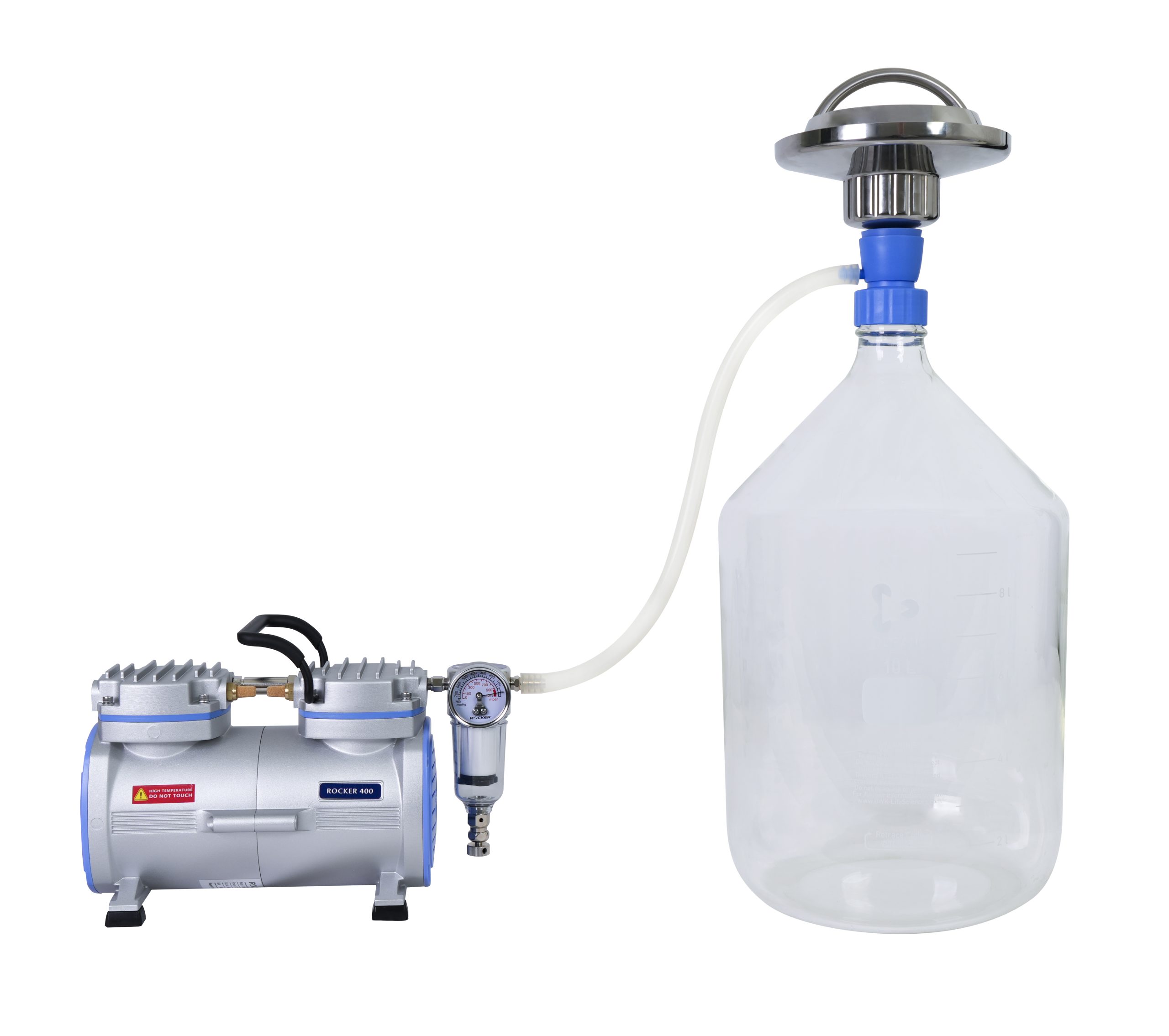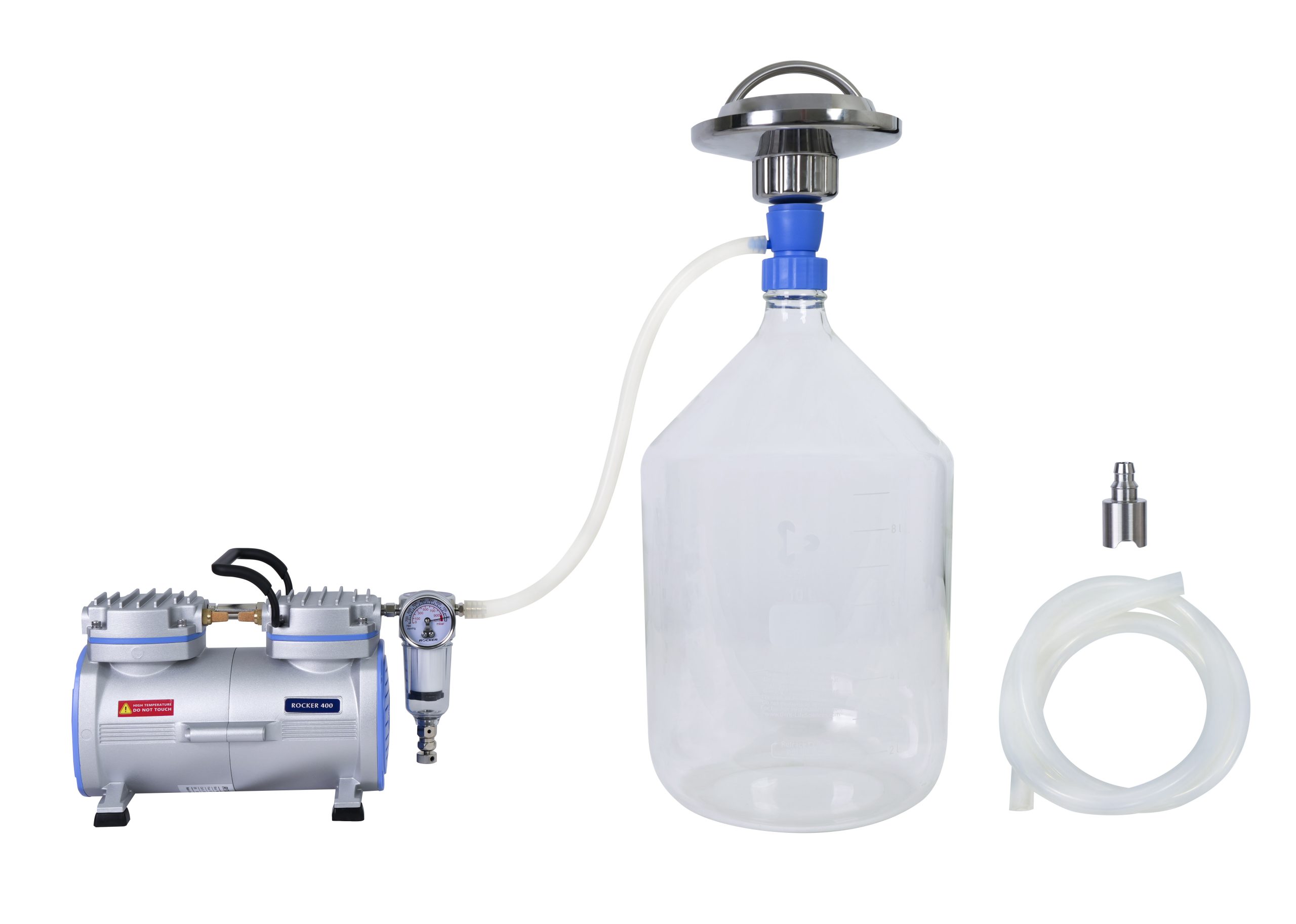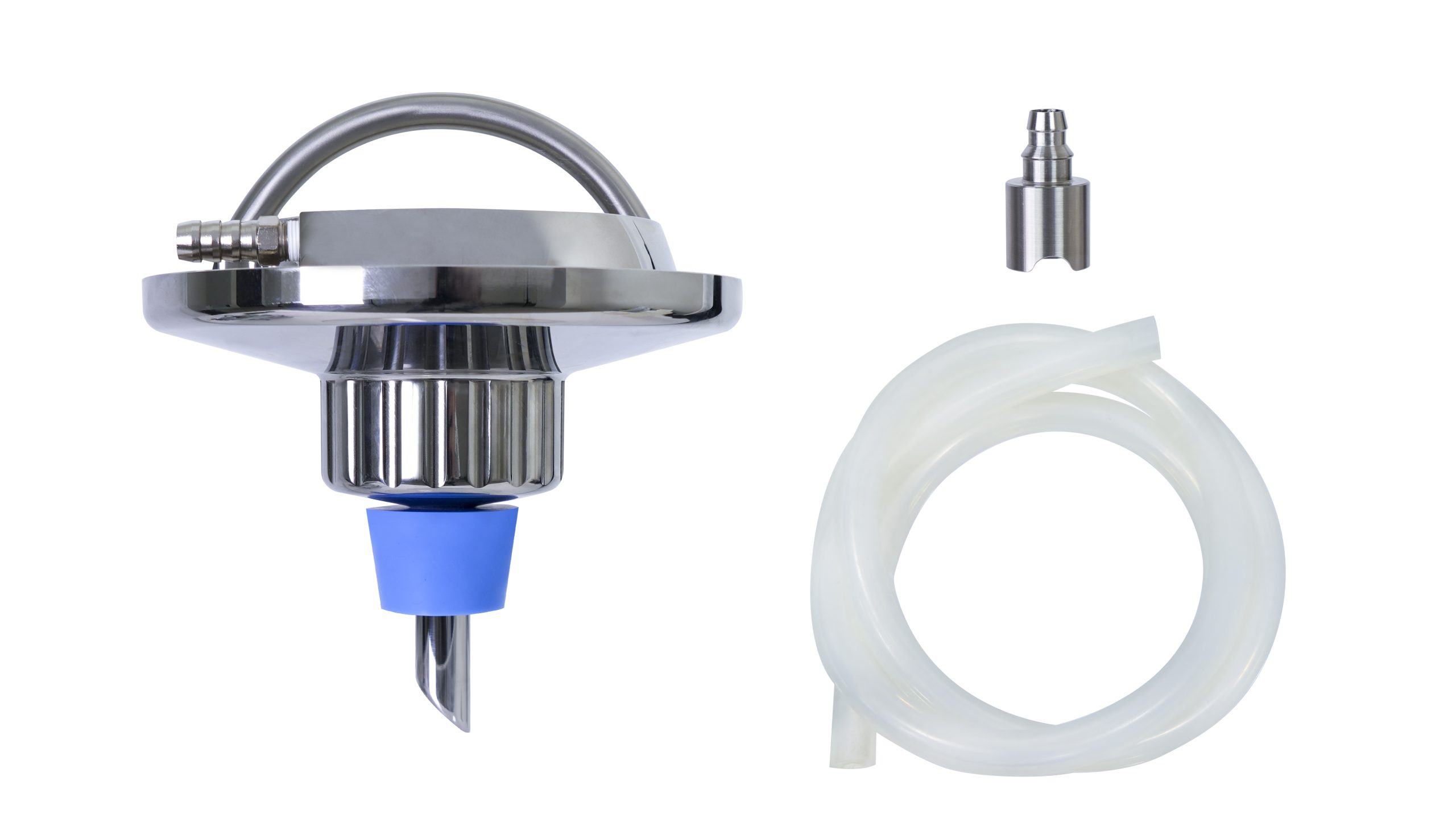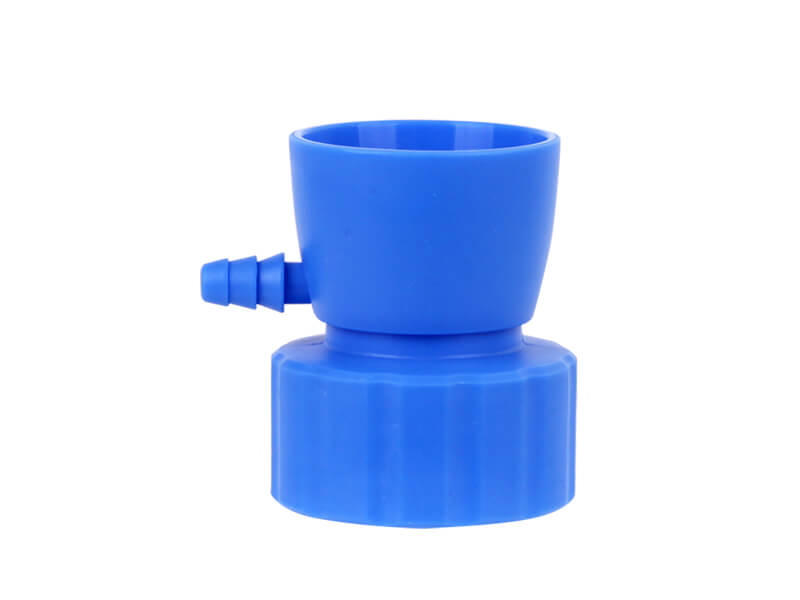Wine Filtration Methods – The Key to Defining Wine Flavor
Why Does Wine Need to Be Filtered?
Wine Filtration Systems
Comparison of Wine Filtration Methods
Using a Continuous Filter Holder for Wine Filtration
Principles for Choosing Wine Filtering Equipment
Appendix 1: Wine Filtration vs. Wine Fining
Appendix 2: Operation Video for Continuous Filtration System
Why Does Wine Need to Be Filtered?
During the winemaking process, wine is typically filtered before bottling. The primary purpose of wine filtration is to remove suspended particles in the wine—such as yeast, bacteria, tartrate crystals, and fermentation residues—thereby enhancing the clarity, appearance, and taste of wine. Filtration can also effectively prevent protein degradation, improve wine stability, and accelerate the wine aging process.
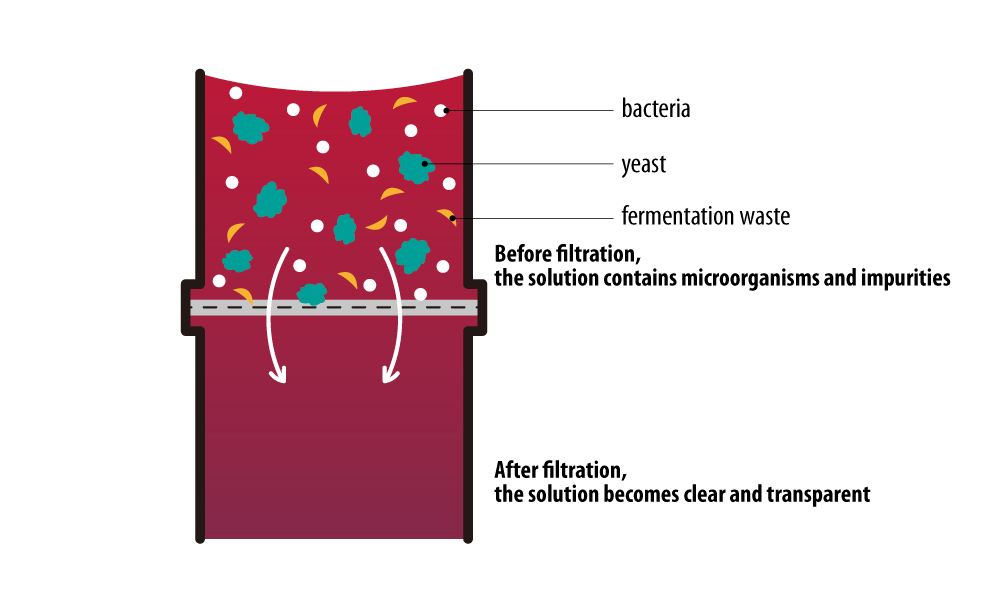
However, filtration may also remove certain solid components that contribute to the wine’s aging potential and flavor development. Therefore, winemakers must choose the appropriate wine filtration method based on the wine characteristics, such as grape variety, desired flavor profile, production process, and cost considerations.
* Filtration is not a mandatory step in winemaking; it should be performed as needed to achieve the desired final product profile.
Wine Filtration Systems
Filtering wine requires the use of a filtering medium. Based on the underlying principle, wine filtration methods can be classified into gravity flow filtration, hand pump systems, and powered pump systems. Winemakers can select the method that best meets their needs.
It is important to note that if you aim to produce wines suitable for long-term storage or aging, excessive filtration should be avoided, as it may adversely affect the flavor or diminish the wine’s economic value due to reduced quality.
Comparison of Wine Filtration Methods
|
|
Gravity flow filtration |
Hand pump system |
Powered pump system |
|
Principle |
Uses gravity to naturally allow the wine to flow from a higher level to a lower level through a wine filter. |
Employs a hand pump to create a pressure differential that forces the wine through the wine filter. |
Utilizes a vacuum pump or air compressor to generate pressure or suction, pushing or drawing the wine through the filter. |
|
Cost |
Low |
Medium |
High |
|
Processing Speed |
Slow |
Medium |
Fast |
|
Operation |
Simple |
Requires two operators |
Relatively simple, but requires setting parameters such as speed and vacuum level |
|
Suitable Volume |
Small (approximately 1–2 gallons) |
Small to medium |
Large |
* In hand pump filtration systems, in addition to using a filter pad, you can also add filtration powder. A small amount of powder helps form a filter cake on the pad, which can capture even finer particles.
New from ROCKER – SFC Continuous Vacuum Filtration System
SFC Continuous Vacuum Filtration System belongs to the powered pump filtration systems. The complete set includes the Rocker 400 oil-free vacuum pump, the SFC 142 Continuous Filter Holder, a 10L serum bottle, and the GL45 Filtration Adapter.
|
Applications:
|
Compared to gravity and hand pump filtration, its advantages include:
|
Using a Continuous Filter Holder for Wine Filtration
The diagram below illustrates the SFC Continuous Filtration System. For detailed instructions, please refer to the operation video or the description provided below.
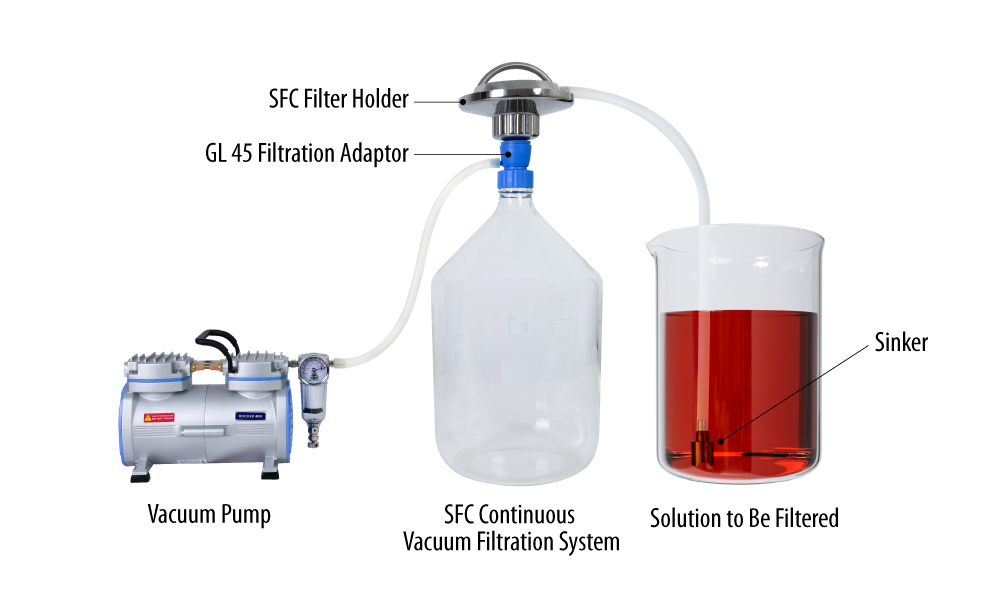
- Assemble the Vacuum Filtration Systems: On the GL45 glass bottle, sequentially install the GL45 filtration adapter and the SFC 142 continuous filter holder, and connect the silicone tubing as shown in the diagram.
* If using an Erlenmeyer or conical flask, directly insert an No.8 silicone stopper or adjust the stopper size accordingly.
- Install the Filter Pad or Filter Membrane: Unscrew the lid of SFC 142, place the filter pad on top of the filter media, then reattach and tighten the lid.
- Wine Filtration: Immerse the end of the silicone tubing connected to the filtration system into the unfiltered wine, start the vacuum pump, and begin the filtration process.
- Collect the Filtrate: After filtration is complete, remove the silicone tubing, funnel, and adapter, turn off the vacuum pump, and cap the GL45 bottle to store the filtrate.
Principles for Choosing Wine Filtering Equipment
Regardless of the filtration method used, it is essential to employ an appropriate filtering medium. For small-volume filtration, the primary filtration media are a filter pad or a filtration membrane (filter sheet), which can be further classified based on their pore size and intended purpose:
- Coarse Filter Pad: Removes larger particles to enhance the wine polish without compromising wine body* or color.
- Medium Filter Pad / Polish Filter Pad: The most commonly used type; it filters out most impurities and yeast while enhancing polish without stripping too much wine body or color.
- Fine Pad / Sterile Pad: Capable of removing the highest amount of yeast and bacteria, helping to reduce oxidation in the wine.
* Wine Body refers to the weight and texture of the wine as perceived in the mouth, not its physical mass.
Pore Sizes of Filtration Media for Wine
Commonly used pore sizes for wine filtration media are 5, 3, 2, 1, and 0.45 μm. As the wine passes through the media, particles and microorganisms larger than the specified pore size are trapped and removed. Winemakers can select the appropriate pore size based on the desired wine flavor and appearance of the final product.
For example, a 2 μm pore size is typically used to remove yeast, while a 0.45 μm pore size can remove bacteria, achieving a sterile effect after filtration.
* Note: Nominal filters do not remove 100% of particles or microorganisms that are larger than or equal to the specified (rated) pore size. For complete removal, absolute filters should be used.
ROCKER offers a variety of filter membranes for the sterile filtration of wine:
| 201PAL60305 | PALL SuporTM PES Filter, 142 mm, 0.2 μm, tabbed, 25/PK |
| 201PAL66604 | PALL SuporTM Nylon Filter, 142 mm, 0.2 μm, 25/PK |
| 201PES-142-022-50 | RONE PES Filter, 142 mm, 0.2 μm, 25/PK |
| 201NY-142-022-50 | RONE Nylon Filter, 142 mm, 0.2 μm, 25/PK |
* The filter membranes listed above are nominal filters.
Summary of Wine Filtration Methods
Wine filtration is a critical process that significantly affects the clarity, taste, and overall flavor of the wine, ensuring that the final product is presented at its best.
Winemakers must select the appropriate filtration system based on the unique characteristics of each wine and the desired final product style, using suitable filtration media and pore sizes to balance impurity removal with the retention of the wine’s body and flavor.
Appendix 1: Wine Filtration vs. Wine Fining
Wine filtration and fining are two distinct processes in winemaking, each playing a different role. Below are the differences between the two steps:
|
|
Wine Fining |
Wine Filtration |
|
Principle |
By adding agents, suspended particles in the wine precipitate chemically. |
Removes remaining solids, yeast cells, or bacteria by mechanically passing the wine through a filtration medium. |
|
Timing |
Performed after fermentation and before filtration |
Performed after fermentation and aging, just before bottling |
|
Purpose |
|
|
|
Other Characteristics |
Fining agents can be used, such as:
|
Can be combined with various filtration media, such as:
|
Appendix 2: Operation Video for Continuous Filtration System
Contact Our Specialists Now to consult about the continuous filtration equipment that meets your needs!
References

